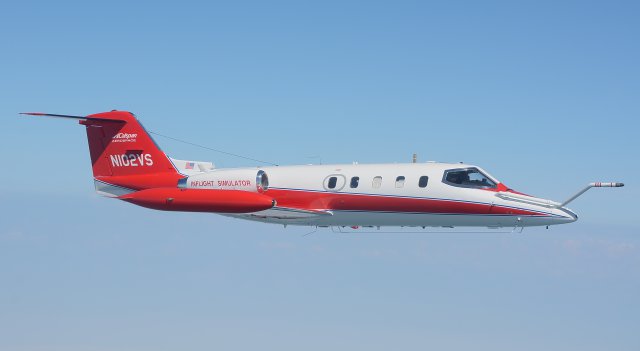The US Navy is continuing the development of its Unmanned Combat Air System Demonstration (UCAS-D) programme, recently completing another phase of its Autonomous Aerial Refuelling (AAR) tests with an optionally piloted Learjet.
On Sept. 6, in Niagra Falls, N.Y., Northrop Grumman assisted the Navy with AAR test flight using a Calspan Learjet equipped with navigation and vision processor software from the X-47B Unmanned Combat Air System (UCAS) demonstrator aircraft. The Calspan Learjet was used as a “surrogate” aircraft, and flew autonomously with a pilot onboard, behind an Omega K-707 aerial refuelling tanker equipped with a refuelling interface system and tanker operator station.
“The AAR segment of the UCAS-D programme is intended to demonstrate technologies, representative systems, and procedures that will enable unmanned systems to safely approach and maneuver around tanker aircraft. We are demonstrating both Navy and Air Force style refuelling techniques,” said Capt. Jaime Engdahl, Navy Unmanned Combat Air System programme manager.
NAVAIR is using the AAR test flights to assess the capabilities of X-47B AAR navigation systems, for possible future use aboard aircraft carriers. Engdahl said the test flights are proving that the concept of the distributed control of UAS systems launched from aircraft carriers can be transferred to the airborne refuelling environment.
The government-industry team used the systems architecture for the AAR test flights that it did for its carrier launched X-47B trials earlier this summer. “By demonstrating that we can add an automated aerial refuelling capability to unmanned or optionally manned aircraft, we can significantly increase their range, persistence and flexibility,” said Engdahl. “This is a game-changer for unmanned carrier aviation.” Later this fall the Navy will resume aerial refuelling testing using a completely autonomous setup.
Photo: Calspan Learjet, shown with inert probe in aerial refueling observation position – CTSI, via NAVAIR
Source: Aviation Today

